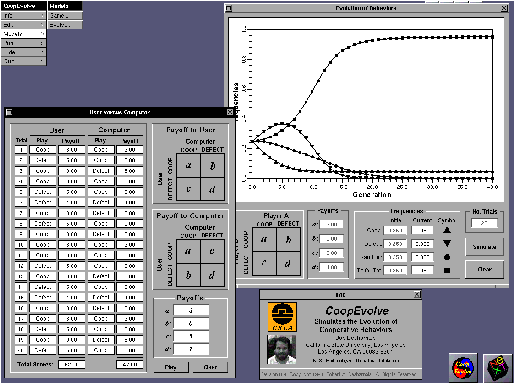

 CoopEvolve
CoopEvolveCoopEvolve simulates a game-theoretic model for the evolution of cooperative behavior. In one window, students interact with the computer in a game of cooperation/defection. The user and computer decide simultaneously to cooperate or defect, with payoffs determined by the payoff matrix. The goal is for students to maximize their payoffs. Students quickly determine that the computer uses a strategy of "tit-for-tat;" cooperation on the first move and a repeat of the user's last move. In a second window students simulate an evolutionary model where "tit-for-tat" competes with three other strategies: "always cooperate," "always defect," and "random." Parameters such as the payoffs, initial frequencies, number of trials can be varied to see their effects on the outcome of evolution. A screen image of a CoopEvolve session appears below. CoopEvolve was written by Dr. Robert Desharnais.

Click to download full resolution image (50.3 KB.)
 Return to the Application Catalog
Return to the Application Catalog